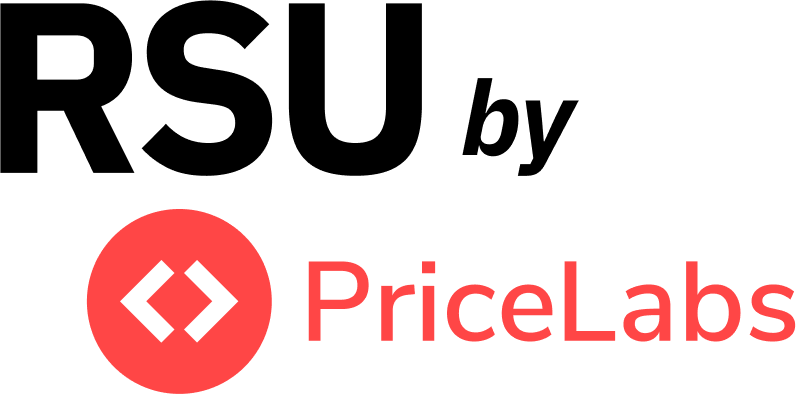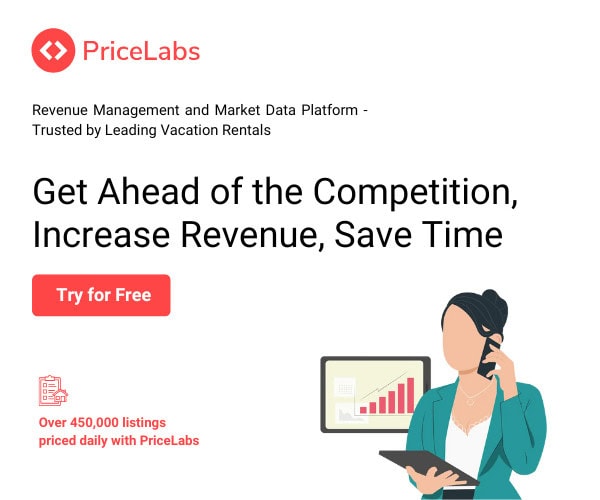If you’re a vacation rental manager, it’s important to know how to pick the right market to enter. In this article, we’ll give you three tips on how to do just that. First, we’ll tell you why it’s important to invest in promising markets. Next, we’ll show you how to assess your competition.
If you want to access fresh data or even completely outsource your homeowner acquisition campaign, you may want to turn to Vintory. For instance, the company’s property intelligence platform provides access to homeowner contact information, including phone numbers, emails, and addresses. This allows you to reach out to homeowners in your target market in multiple channels, increasing your chances of conversion.
In addition to searching by location, you can filter by a wide array of property characteristics. It is crucial to your upcoming homeowner acquisition campaign because you’ll save countless hours (and avoid making costly mistakes) by targeting the right homeowners.
The first step is to evaluate promising vacation rental markets. As a property manager, your decision process is different from that of owners looking for the best short-term rental market in which to invest. As an owner, you’re looking for strong demand. As a property manager, you also want to assess the supply side of the equation and the existing competition.
How to Pick the Right Vacation Rental Market
Looking at the different rankings of the best vacation rental markets and at the metrics used to assess their potential can provide you with a headstart. For instance, most of the rankings are calculating revenue potential and using occupancy data, which comes in handy in your research.
These markets are also interesting as they are attracting new owners and investors, which may soon be looking for a vacation rental management company or an Airbnb management service. When you lead an outreach campaign, it is better to use fresh data to contact property owners. If properties are changing hands or permits are being awarded, then you have a treasure trove of data to use for your ensuing homeowner acquisition campaign. Vintory has its own property intelligence platform that allows you to search for properties in your market.
To help you pick promising vacation rental markets where to start or expand your vacation rental market company, let’s look at two recent rankings created by AirDNA, a short-term rental data company, and Vacasa, the largest vacation rental property management company in the US.
When looking at ranking, you have to look at which metrics were used to create it and whether it is influenced by market trends that may change in the mid-term. To illustrate, let’s have a look at the AirDNA and Vacasa rankings and then see what we can learn from them.
***
AirDNA’s top 10 vacation rental markets were to invest in 2022
- Maui, HI
- Kenai Peninsula, AK
- Chattanooga, TN
- Gulfport/Biloxi, MS
- Slidell, LA
- Crystal River, FL
- Charleston, SC
- Joshua Tree, CA
- Galena, IL
- Buffalo, NY
Vacasa’s top 15 best places to buy a vacation home in 2021,
- Gatlinburg, TN
- St. Augustine, FL
- Gulf Shores, AL
- Dauphin Island, AL
- Norris Lake, TN
- Blue Ridge, GA
- Palm Springs, CA
- Deep Creek Lake, MD
- Seaside, OR
- Ludlow, VT
- Big Bear, CA
- Rockaway Beach, OR
- Cle Elum, WA
- Big Sky, MT
- Twentynine Palms, CA
What can we learn from these rankings:
- While Florida is by far the biggest short-term rental market on a state level, with close to 22% of all the vacation rentals listed in the US, according to VTrips founder Steve Milo, a lot of the most promising markets are located in other places.
- The Southeast US does contain a lot of well-ranked markets, such as Gatlinburg, Chattanooga, and North Lake (Tennessee), Gulf Shores and Dauphin Island (Alabama), and Charleston (South Carolina).
- Note that AirDNA’s ranking is for 2022 and Vacasa’s is for 2021. This is where you see the importance of context. In 2022, fly-to destinations such as Hawaii and Alaska are rebounding with revenge, after being out of reach of many other Americans for parts of 2020 and 2021. So, when looking at rankings, watch out whether the data is from a “normal” year or whether there are underlying trends at work that may not last.
- These two lists are strong with seaside and rural markets. Now, urban short-term markets are on the rebound in 2022, so you may not want to disqualify them entirely.
- Below, we’re looking at how these rankings were. Something jumps out: Vacasa only ranks markets where it has a presence. As the company only has 59 properties in Alaska, it is not surprising that the various Alaska vacation rental markets could not make it to its list. Once, again, take a step back when looking at rankings.
- The two rankings use interesting metrics for vacation rental managers, such as rental demand and revenue growth for AirDNA, and vacation rental performance data for Vacasa. They also use data that may be a bit less directly useful to you as a vacation rental manager, such as home sales and the average cost for operating a property.
Which metrics does AirDNA use to determine the best vacation rental markets?
AirDNA uses property-level performance data that its systems collect from Airbnb and Vrbo. Then, AirDNA creates an updated index of the best markets for investment in the coming year. This methodology allows the company to find high-performing, growing short-term rental markets that provide returns for investors. Here are the three main metrics that AirDNA look at:
Rental Demand: How often are rentals booked throughout the year? By using a combination of the TTM occupancy and listing growth rates, this metric shows the relative strength of travel demand in each market (TTM Revenue describes the revenue that a company earns over the trailing 12 months (TTM) of business).
Revenue Growth: Did properties earn more this year than they did last year? This is calculated by looking at the TTM year-over-year change in revenue per available room (RevPAR) for properties that were booked over the past two years.
Investability: This metric compares the expected income of a property relative to the cost of buying it. This is calculated by using the average revenue potential of homes in the area, subtracting the average cost for operating the property, and then dividing that by the typical home value in the same area for similar-type homes. We weigh home values by the number of short-term rentals in each zip code, to make the home values more compatible with the relevant earnings in the same market.
Which metrics does Vacasa use to create its list of best places to buy a vacation home?
To determine its ranking of top vacation rental markets, Vacasa analyzed home sales and vacation rental performance data from the last twelve months for vacation destinations throughout the country where Vacasa and its licensed subsidiaries manage vacation rentals.
To determine average gross rental income (homeowner revenue made from bookings, excluding any fees) for a market, we used actual performance data for the market as a whole, where available, except that Vacasa-only data was used for markets where Vacasa manages more than 50 units and actual Vacasa rental performance beats the market average by at least 25%.
To calculate the average cap rate (Capitalization Rate = Net Operating Income / Property Asset Value X 100), Vacasa considered the averages of the following in each market: property taxes, utilities, HOA fees, insurance, and property management fees.
Refine the market data to look at the property types you are interested in
AirDNA’s Rentalizer is just one of the tools available on the market. We may also want to check PriceLabs’ Market Dashboards, and Wheelhouse’s Market Reports.
These tools are important as also enable you to go beyond one-size-fits-all rankings. For instance, if your niche is large entire vacation homes with at least 2 bedrooms, you can slice and dice the data to remove properties that do not fit your criteria. It may give you quite a different perspective on a market.
How to Assess Your Competition in a New Vacation Rental Market
In the section above, we gave you a list of criteria for picking good vacation rental markets. In this section, we will talk about how to assess your potential competition in a new market.
Basically, when diving into a new vacation rental market, you want to know if there are other companies that are already in the market. If yes, how many? How long have they been around? What kind of reputation do they have among customers and owners?
If your competitors are well-known brands, this is great news! It means that the market has momentum already. It has been proven to work already. And, the risk is lower for you because there are established companies that worked hard to create good word of mouth among customers and vacation rental owners in the market.
You will want to know your competitors’ contact information. This includes their website URL, phone numbers, email IDs…if they have a social media presence, their accounts and URLs. You might want to do a competitive analysis on them so you can learn from their mistakes. There is also a good chance that you could buy the company if they’re for sale
Here are a few sources of data you can use you can creating your competitive analysis
-> VRMA, local vacation rental manager associations (if they exist)
-> Google searches (for example, you could search for “Palm Beach vacation rental management” or “Gatlinburg Airbnb management service”)
-> Host profiles on Airbnb and Vrbo (see the table above for how to find this information)
-> Local business listings (citations) like Yelp, Google Places, Yahoo! Local…
-> LinkedIn profiles of local managers and owners
-> Instagram, Facebook, Twitter profiles of local managers and owners
-> SEMrush, SimilarWeb, and Ahrefs can show you other vacation rental management company websites and how good their SEO (search engine optimization) is.
-> If you have some budget, you can hire data companies such as Transparent to analyze a market, list all active vacation rental management companies and give you relevant data such as the number of properties that each of them has.
Once you have gathered information about your competitors, here are a few questions to ask yourself:
-> How many vacation rental companies are there in the market? How big are they? Is there a clear market leader, or is it a fragmented market with many small companies? Are big players such as Vacasa, Evolve, or VTrips active in the market?
-> Are they well-known brands? If yes, how was their reputation built over time? Do any of them have bad reviews or complaints?
-> Do the competition have any established relationships with local authorities and municipalities?
-> What kind of reputation do they have among customers and owners? Are people happy with them or not?
-> How many properties do they have in the market? Do they have a large selection of rentals or just a few?
-> Are any of their hosts on Airbnb and VRBO also hosted by competitors from other markets? This might mean that your new market is already saturated with vacation rental management companies.
-> Are there any new players entering the market?
Competitors may be good acquisition targets to help you enter a market
Reaching out to competitors for acquisition can be a fast way to enter new markets. If you are targeting a market that is already crowded, it may make sense to reach out to companies that are currently servicing that market and inquire about their availability. This will give you an idea about the deals being cut in the market, as well as what kind of services these companies offer. It’s important to remember that acquiring a competitor doesn’t mean you have to merge with them – you can simply use their resources and knowledge base to help rapidly extend into their target market.
Once you have the email IDs, phone numbers of your competitors, you can reach out to them. You might ask them if they’re for sale. This is a small market after all, and there’s no sense in having more than one company doing
Acquiring a competing vacation rental management company can help you extend into new markets very quickly. Your competitor knows the ropes, has a list of email IDs and phone numbers of vacation rental owners, can give you an idea about what kind of deals are cut in the market that you’re targeting.
After two years of the pandemic, a lot of vacation rental managers are actually looking to sell their companies. Pick up one of these companies, and you can rapidly extend into the market that they were servicing.
Conclusion:
In conclusion, the way that you pick a new vacation rental market can have an impact on your success. If you are looking to enter into a promising and growing industry, it is important to do your research before making any decisions. We believe that you can be successful as a manager in any industry, as long as you make the right choices.
Vintory is our go-to partner when it comes to supply growth. You may want to read their articles about how to run a successful homeowner acquisition campaign and which vacation rental metrics you should look at when collecting owner leads.
They’re a full-service, vacation rental inventory growth company that can help you expand your business in various ways. They offer both the tools (software) and the agency services you need to grow your inventory, and they have multiple plans to fit your specific needs. Plus, they have the experience of running campaigns for 250 different vacation rental management companies.
If you’re looking to grow your inventory, you may want to reach out to Vintory. Even if you don’t end up working with them, they have a lot of free resources available to help you learn how to improve your owner marketing strategy.








